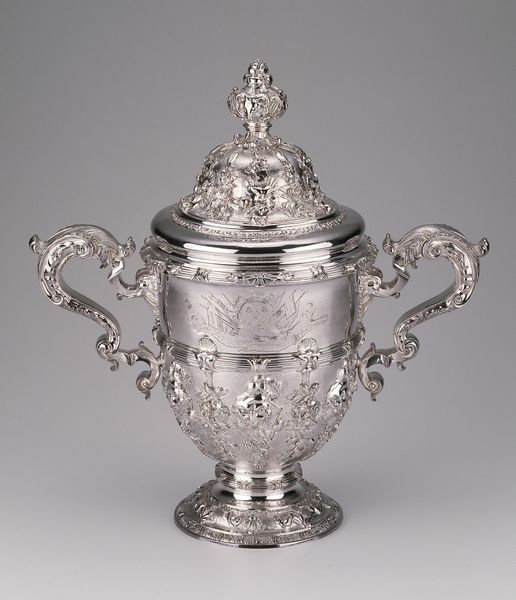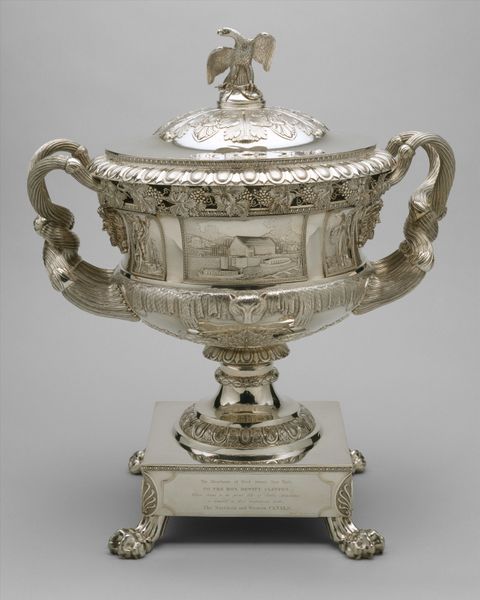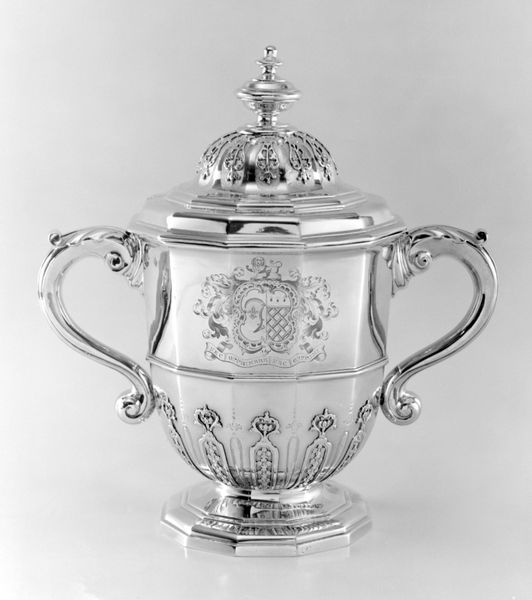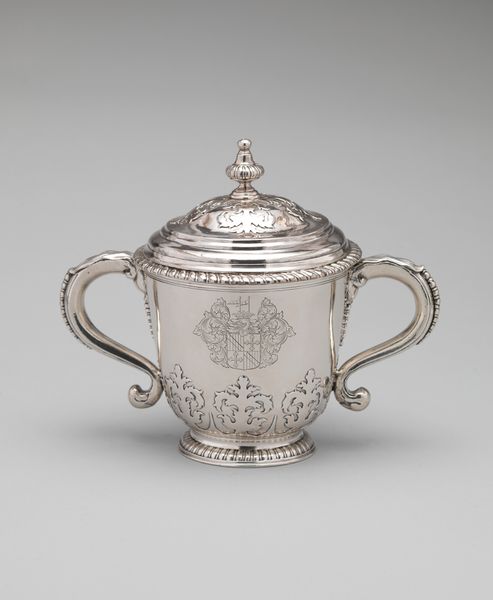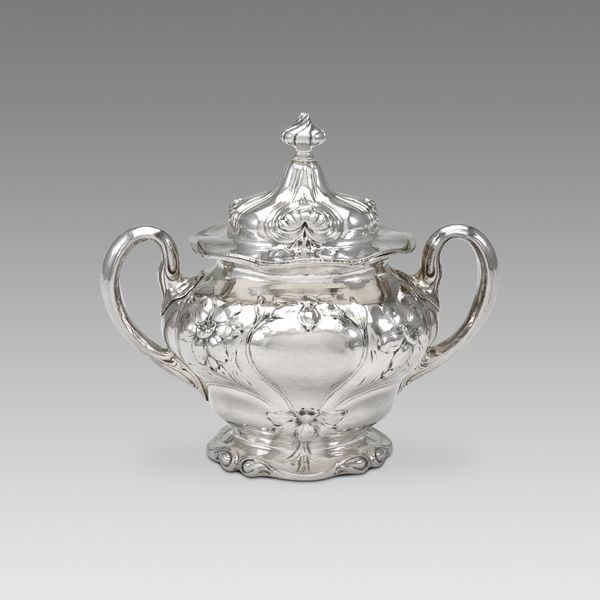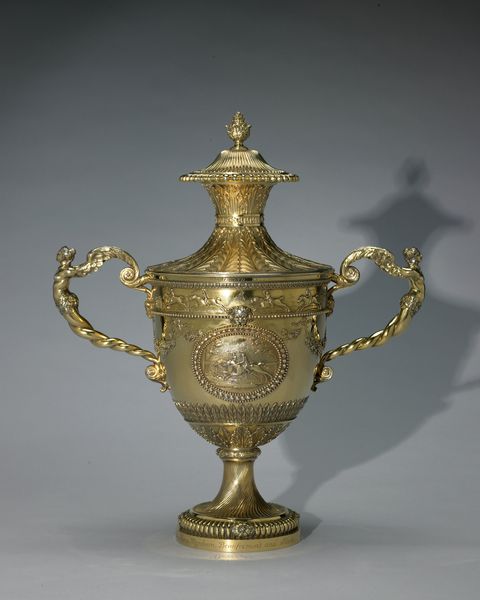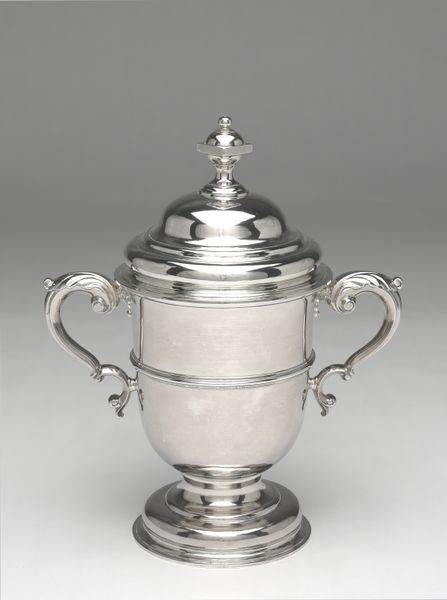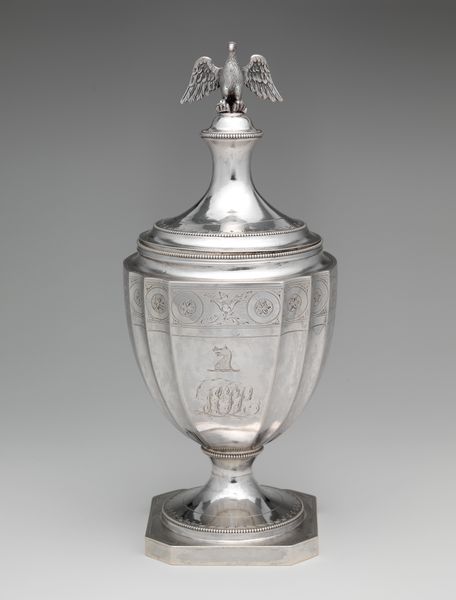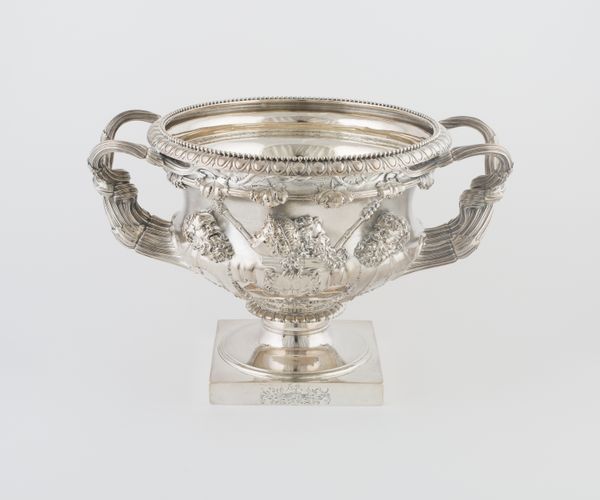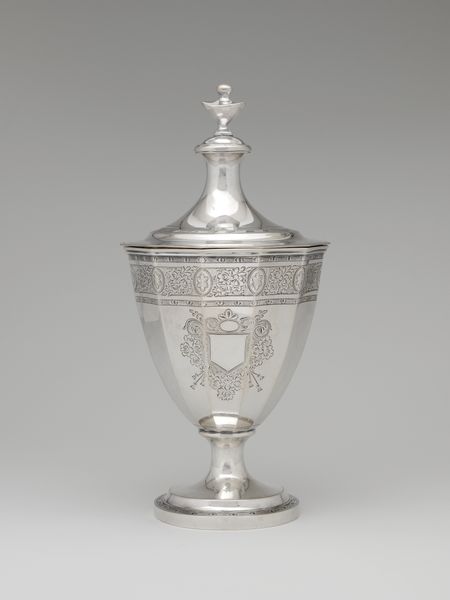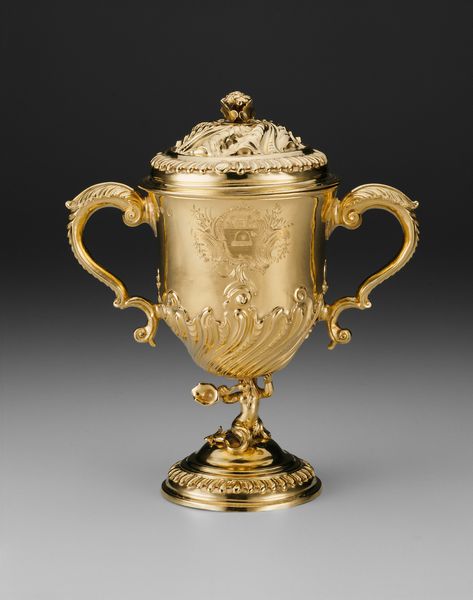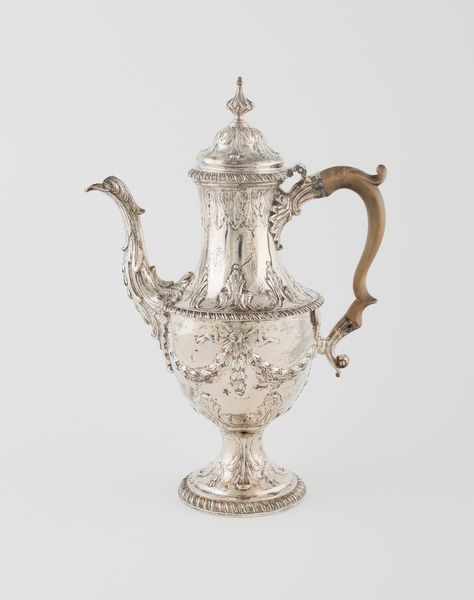
carving, silver, assemblage, metal, sculpture
#
portrait
#
neoclacissism
#
carving
#
silver
#
animal
#
assemblage
#
metal
#
jewelry design
#
waterfall
#
sculptural image
#
stoneware
#
geometric
#
sculpture
#
united-states
#
history-painting
#
decorative-art
Dimensions: 23 3/4 x 20 3/4 x 14 3/4 in. (60.3 x 52.7 x 37.5 cm); 401 oz. 1 dwt. (12473.9 g)
Copyright: Public Domain
Curator: The first impression I have is one of shimmering excess. It is beautiful but it's so ornate; the details seem piled on top of one another. Editor: Well, let me orient you to this stunning piece. It’s the "Presentation Vase," crafted in 1825 by Thomas Fletcher. The work features carving, assemblage, and various metalworking techniques with silver as the primary material. It resides here with us, at the Metropolitan Museum of Art. Curator: Right, and examining those materials – the sheer quantity of silver alone speaks volumes about early 19th-century American affluence. Think about the labor involved in the extraction, smelting, and crafting. This isn’t just an object; it represents an entire network of resource consumption and human effort. Editor: Absolutely. This vase wasn’t meant for domestic use, but to commemorate and broadcast certain ideals. It's interesting how Neoclassical forms became the visual language for expressing aspirations to republican virtues and American identity. This piece signifies more than just craft. It is about solidifying cultural narratives. Curator: And look at how the object is assembled – the various pieces, the chasing, the casting... all contribute to its value, both monetary and symbolic. The labor shapes it from mere raw material into an artifact imbued with meaning. Is that an eagle on top of the lid? Editor: Precisely! Notice how the depictions are carefully rendered, celebrating American landscapes alongside classically inspired motifs? These blend to express national pride through an established, historically resonant visual vocabulary. It reflects the museum's purpose in collecting such pieces: for educating a broad public. Curator: The question remains, what specific conditions made the creation and, subsequently, the value attribution of this vase possible? It pushes me to think of art not just as aesthetic, but as inherently tied to economics. Editor: Exactly. Understanding those power dynamics are critical. I consider this silver vessel to be a touchstone in the ongoing, shifting dialogue between a nation's self-image and material culture. Curator: Seeing it through this light makes me look beyond the mere shimmer and complexity. The weight of its manufacture changes everything. Editor: To observe the convergence of art, aspiration, and the narratives it can inspire makes you really start to wonder.
Comments
No comments
Be the first to comment and join the conversation on the ultimate creative platform.
